Understanding Early Intervention in Speech Therapy
Early intervention is a proactive approach designed to identify and address developmental delays in children from birth through three years of age. Speech therapy is one of several common early intervention services offered.
By intervening early, speech therapists can provide the opportunity to enhance the child's developmental outcomes and mitigate potential long-term difficulties.
Considerations When Writing Early Intervention Goals
Early intervention for speech therapy usually focuses on supporting young children (birth to three years) at risk of or exhibiting delays with communication skills. Intervention may include support with receptive/expressive language (e.g., understanding/speaking), cognitive processing (e.g., problem-solving), feeding techniques, or even parent/caregiver coaching.
Services are typically provided in settings familiar to the child, such as their home, daycare, or a comfortable, community-based setting, which helps to ensure that interventions are as effective and naturalistic as possible. This approach supports the child and empowers families with strategies and resources to facilitate their child's growth and integration into their community. These settings are factors to keep in mind when developing goals and targets.
That being said, early intervention services should be highly individualized for each child and family and that can go well beyond the setting. Creating goals for an early intervention care plan may involve setting objectives for both the child and the parents/caregivers, as active parental involvement is crucial for maximizing therapy effectiveness.
⭐ Looking for more early intervention therapy resources and support?
Create measurable and individualized early intervention/early childhood speech therapy goals for your clients with this top-selling, time-saving resource.
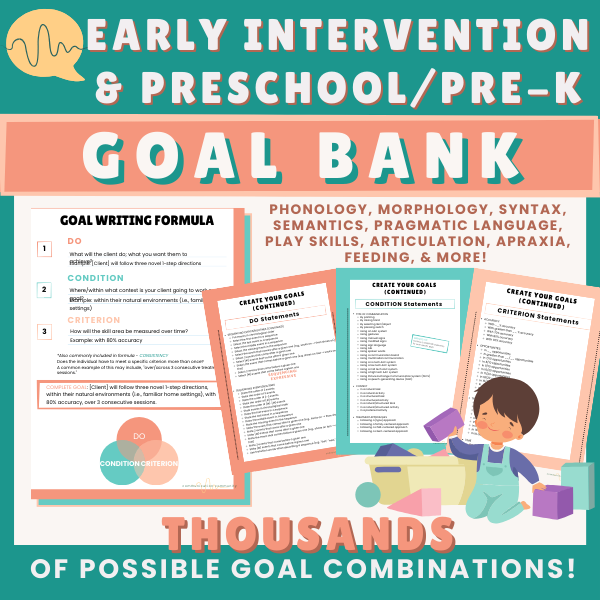
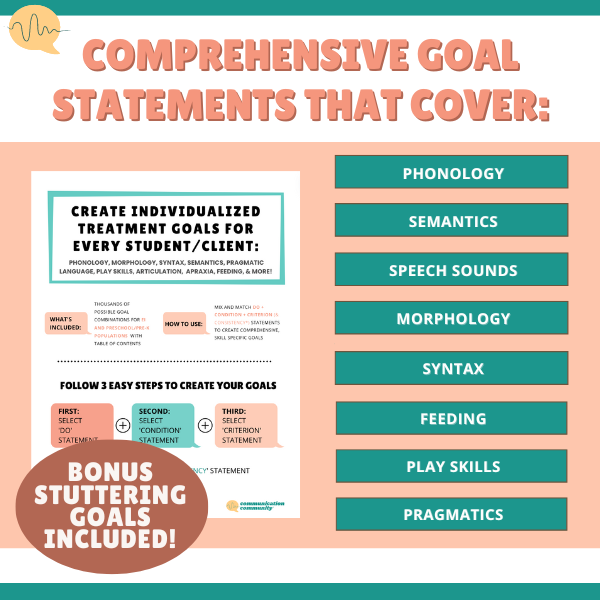
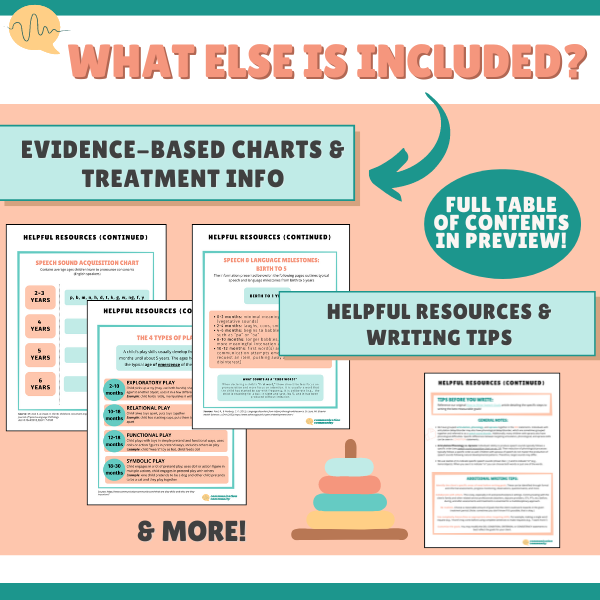
Check it out in our TPT Store (click here) or find it included in our Premium Resource Library within our time and cost-saving Community membership!

Writing Early Intervention Goals for Speech Therapy
If you haven’t already, check out our article that outlines How to Write Speech Therapy Goals.
For the purpose of this article, we will discuss the process of goal writing for individuals receiving Early Intervention for speech and/or language. At the conclusion of the Goal Bank, we have included some general early intervention DO statements for parents/caregivers.
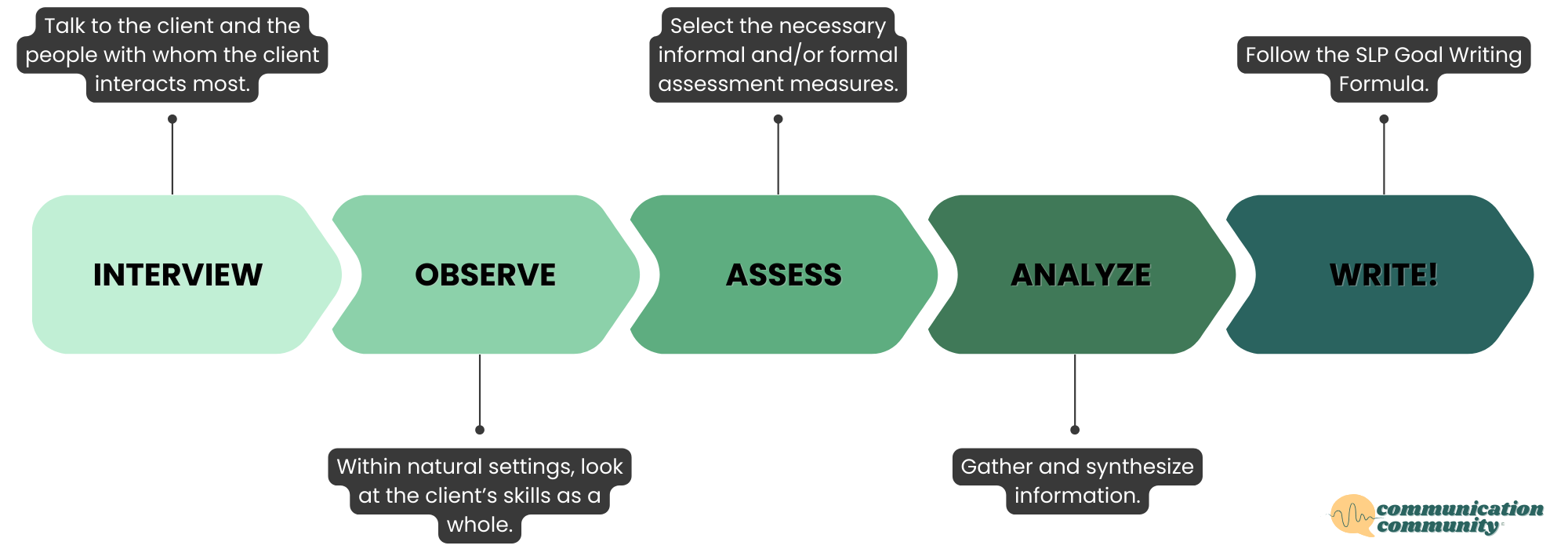
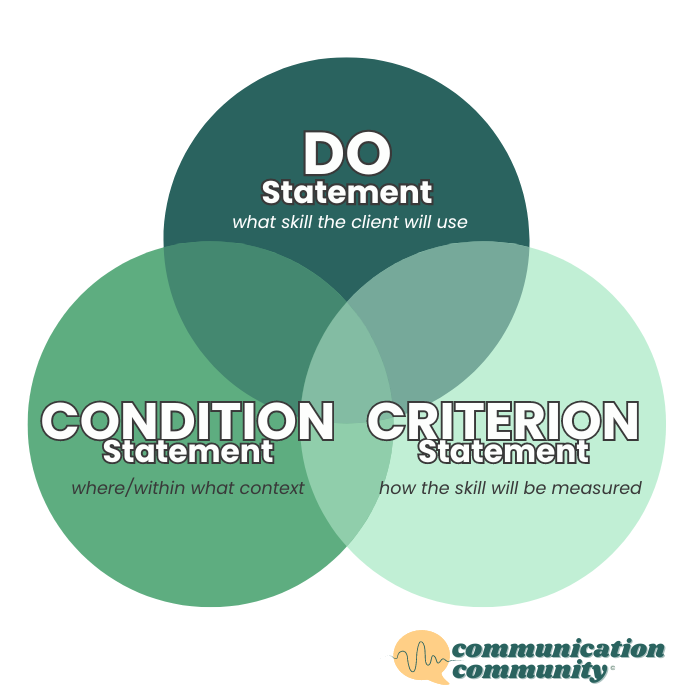
Steps for writing goals for speech and language skills (left); Communication Community goal writing formula (right)
The first step to writing goals is identifying the area(s) of need. This may include formal and informal assessments, observations, and interviews with clients, parents, teachers, and/or other members of the early intervention team. Once you have identified the area(s) or need, you can begin composing the goals you are going to write and target.
As seen above, speech goals should be written with 3* components in mind: the DO statement, the CONDITION statement, and the CRITERION statement.
*Also commonly included is consistency (we incorporate this!). Aka: does the individual have to meet a specific criterion more than once? A common example of this may include across 3 consecutive sessions. This is usually something understood by the therapy organization/service provider and is sometimes/sometimes not included in the written goal itself. Including consistency statements ensure that the skill has been generalized and provides more reliable data that the skill has been properly mastered.
DO statement
What the client is actually going to DO and the specific skill they will be working towards.
Example: indicate the need for assistance by bringing a preferred toy/object to a familiar adult
CONDITION statement
The specific setting and/or context your client will work on this skill.
Example: within the home/daycare environment
CRITERION statement
How the client’s performance will be measured.
Example: 3x throughout the treatment session
DO + CONDITION + CRITERION
Example: [Client] will indicate the need for assistance by bringing a preferred toy/object to a familiar adult, within the home/daycare environment, 3x throughout the treatment session
There you have it! An example using our Goal Writing Formula containing the DO + CONDITION + CRITERION (don’t forget to think about consistency!) for increasing communication skills during Early Intervention services.
Early Intervention Goal Bank
The following are some examples of speech therapy goals that may be targeted in sessions. You can take these goals as is, or take the DO statement from one, the CONDITION from another, and CRITERION from another. Remember: the best goals are the ones that most closely align with the client’s needs, and all clients are different!
EI Speech Therapy Goals: Receptive Language
Example #1: [Client] will follow the 1-step direction, “Give me the [item],” while interacting with familiar household toys/objects, with 75% accuracy.
Example #2: [Client] will respond (i.e., wait/stop in place) to the safety command, “Stop [name],” across settings within the home, with 90% accuracy.
Example #3: [Client] will identify 5 body parts (i.e., point on body), when named by a familiar communication partner, in 9 out of 10 trials.
EI Speech Therapy Goals: Expressive Language
Example #1: [Client] will use a multimodal approach to produce the phrase, “Want [item],” when making requests for preferred toys/objects, in 80% of opportunities.
Example #2: [Client] will label 10 people/objects/animals, during a joint book reading activity, with 90% accuracy.
Example #3: [Client] will use 2 novel CVCV (e.g., “dada”) productions, during an unstructured activity with an adult/caregiver, in 75% of opportunities.
EI Speech Therapy Goals: Pragmatic Language & Play Skills
Example #1: [Client] will gain attention (i.e., call name/tap shoulder), across 2 different home settings (e.g., living room, kitchen), in 75% of opportunities, across 3 consecutive sessions.
Example #2: [Client] will engage in a preferred symbolic play routine, during an adult-led floortime activity, 10x throughout the treatment period.
Example #3: [Client] will use the ASL sign to ask for, “help,” within 2 contexts (e.g., putting on clothes, brushing teeth), within 80% of opportunities.
EI Speech Therapy Goals: Feeding
Example #1: [Client] will independently bring cup to mouth, following an adult’s model during snack time, in 50% of opportunities.
Example #2: [Client] will improve their tongue strength by pushing up on a tongue depressor, during a structured activity, in 9 out of 10 trials.
Example #3: [Client] will maintain a safe head and trunk position while chewing 2 different foods, during a therapist-led mealtime routine, 2x throughout the treatment session, across 3 consecutive sessions.
EI Speech Therapy Goals: Parental Involvement
General DO Statements only
Example #1: Introduce core words during everyday routines
Example #2: Model clear speech and use gestures
Example #3: Increase wait time between turns
We hope you have enjoyed this goal bank. For more information about early intervention services and eligibility, feel free to check out our other article What is Early Intervention?
For more How to articles, check out our Goal Bank tab! Featuring some of our top posts:

![How to Write Early Intervention Goals for Speech Therapy [goal bank included]](https://www.communicationcommunity.com/content/images/2024/05/How-to-Write-Early-Intervention-Goals---ghost-cover--1--1.png)
![How to Write Apraxia Goals [with goal bank]](https://www.communicationcommunity.com/content/images/2024/07/Apraxia-Goals--1-.png)
![How to Write Phonological Awareness Goals [with goal bank]](https://www.communicationcommunity.com/content/images/2024/07/How-to-Write-Phonological-Awareness-Goals.png)
![How to Write Aphasia Goals [with goal bank]](https://www.communicationcommunity.com/content/images/2024/07/Aphasia-Goals--updated-.png)
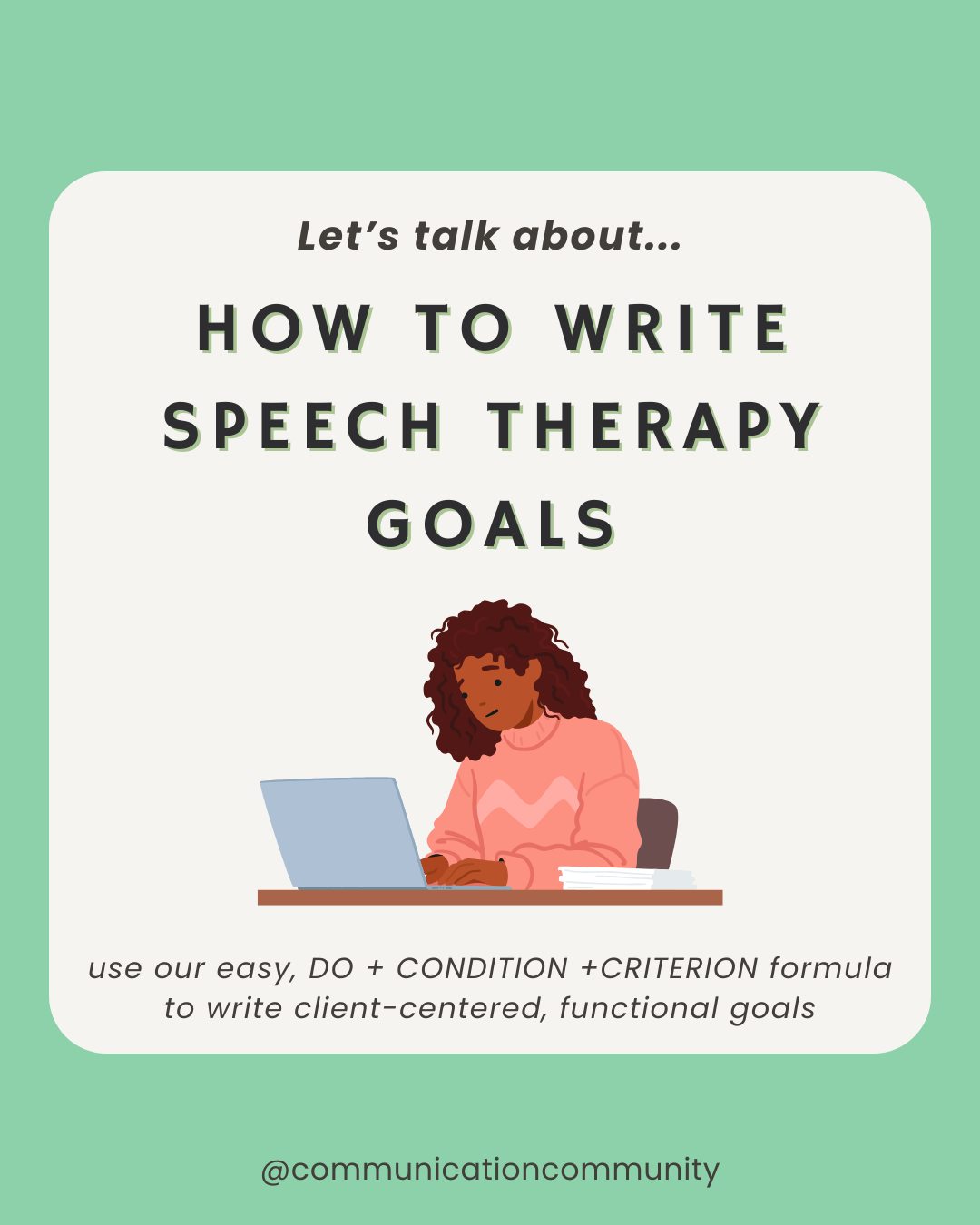
![How to Write Executive Functions Goals [with goal bank]](https://www.communicationcommunity.com/content/images/2024/10/How-to-Write-Executive-Functions-Goals.png)
